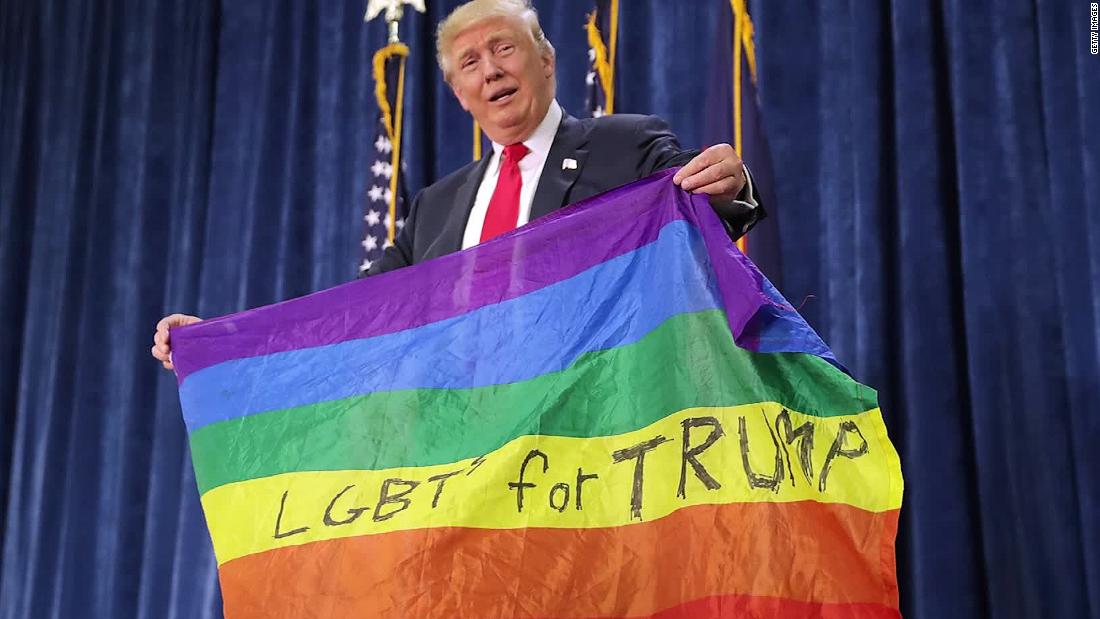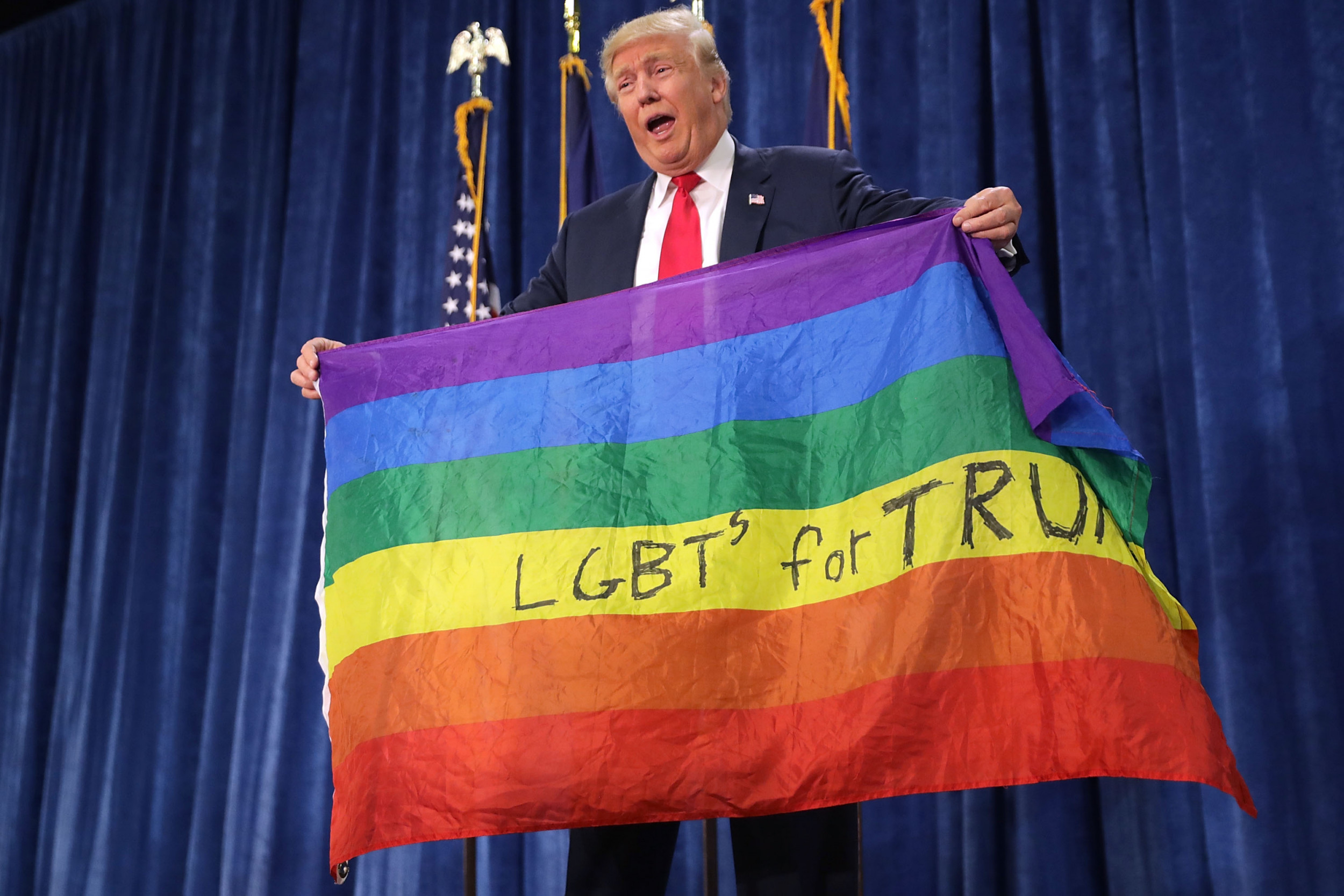Unpacking The Truth Behind "Gay And Retarded Trump": A Candid Conversation
Let’s face it, folks. The phrase "gay and retarded Trump" has been tossed around in conversations, memes, and debates like a hot potato. It’s one of those topics that sparks curiosity, raises eyebrows, and leaves people scratching their heads. But what’s the real story behind this controversial narrative? Is it just another buzzword or does it hold some truth? Let’s dive deep into the heart of the matter and unpack the layers of this complex topic.
When we talk about "gay and retarded Trump," we’re not just discussing a catchy phrase. We’re diving into a cultural phenomenon that intersects with politics, identity, and public perception. This isn’t just about one person; it’s about how society interprets, reacts, and sometimes misinterprets complex ideas. It’s like peeling an onion—layer by layer, we uncover truths, half-truths, and flat-out myths.
Before we go any further, let’s set the record straight. This article isn’t here to push any agenda or spread misinformation. Instead, we aim to provide a balanced, well-researched perspective that respects all sides of the conversation. So, buckle up, grab your favorite drink, and let’s explore the world of "gay and retarded Trump" together. No judgment, just facts and insights.
Read also:Companionla Photos Your Ultimate Guide To Stunning Visuals And Memorable Moments
Understanding the Origins of "Gay and Retarded Trump"
First things first, where did this phrase even come from? Like many viral terms, "gay and retarded Trump" didn’t just pop out of thin air. It started as a joke, a meme, or maybe even a satirical comment on social media. But as with anything that gains traction online, it quickly snowballed into something much bigger.
Some argue that the phrase originated from critics who wanted to mock former President Donald Trump’s policies, personality, or public image. Others believe it was a way for LGBTQ+ communities to reclaim power over narratives that often exclude them. Whatever the origin, it’s clear that the phrase has sparked heated discussions across the globe.
But why does it resonate so deeply? Is it because it challenges societal norms? Or is it simply a reflection of how polarized our world has become? Let’s explore this further in the next section.
Breaking Down the Key Components
What Does "Gay" Mean in This Context?
When we say "gay," we’re not just talking about sexual orientation. In this case, it’s often used as a metaphor for inclusivity, acceptance, and diversity. The LGBTQ+ community has long been at the forefront of advocating for equal rights and representation. So, when people associate "gay" with Trump, they might be pointing out contradictions in his public stance versus his actions.
For instance, while Trump has claimed to be a supporter of the LGBTQ+ community, critics argue that his policies tell a different story. From banning transgender individuals from serving in the military to rolling back protections for LGBTQ+ rights, there’s plenty to unpack here. But hey, we’ll leave that debate for another day.
What About "Retarded"?
Now, let’s talk about the second part of the phrase: "retarded." This word has a long and complicated history. Originally, it was used to describe individuals with intellectual disabilities. Over time, however, it became a derogatory term, often used to insult or belittle others.
Read also:Gaby Austin The Rising Star You Need To Know About
In the context of "gay and retarded Trump," some argue that the word is being used sarcastically to highlight the absurdity of certain claims or policies. Others see it as a harmful perpetuation of ableist language. Either way, it’s important to approach this topic with sensitivity and respect.
The Intersection of Politics and Identity
Politics and identity are like oil and water—they don’t always mix well. Yet, they’re inextricably linked, especially in today’s world. When we talk about "gay and retarded Trump," we’re not just discussing a person or a phrase. We’re talking about the intersection of politics, identity, and public perception.
For many, this phrase represents a clash of values. On one hand, there’s the push for inclusivity and representation. On the other hand, there’s resistance to change and a desire to maintain the status quo. It’s a tug-of-war that plays out in boardrooms, classrooms, and living rooms across the country.
But here’s the thing: this isn’t just about Trump. It’s about how we, as a society, navigate these complex issues. How do we ensure that everyone feels seen, heard, and respected? That’s the million-dollar question.
Public Perception vs. Reality
Public perception is a tricky beast. It’s shaped by media, personal biases, and sometimes, sheer speculation. When it comes to "gay and retarded Trump," perceptions vary wildly depending on who you ask.
- Some see it as a harmless joke.
- Others view it as a serious critique of Trump’s leadership.
- And then there are those who consider it offensive and divisive.
The truth probably lies somewhere in the middle. But how do we separate fact from fiction? How do we ensure that our perceptions are based on reality rather than hearsay? That’s where research and critical thinking come in.
Data and Statistics: What Do They Tell Us?
Let’s talk numbers for a moment. According to a 2022 survey conducted by the Pew Research Center, public opinion on LGBTQ+ rights has shifted dramatically over the past decade. More people than ever before support equal rights and protections for LGBTQ+ individuals. However, there’s still a significant divide along political lines.
Similarly, studies on ableism in media and politics reveal that harmful language continues to be used, often without consequence. This highlights the need for greater awareness and education on these issues.
But here’s the kicker: data alone can’t tell the whole story. It’s up to us, as individuals and as a society, to interpret and act on this information in meaningful ways.
Biography: Who Is Donald Trump, Really?
Basic Information
Before we dive deeper into the topic, let’s take a moment to understand the man behind the name. Donald J. Trump, the 45th President of the United States, is a polarizing figure who has left an indelible mark on American politics.
| Full Name | Donald John Trump |
|---|---|
| Birth Date | June 14, 1946 |
| Birthplace | Queens, New York |
| Occupation | Businessman, Television Personality, Politician |
| Political Affiliation | Republican Party |
Trump’s rise to fame began in the world of real estate and entertainment, where he became a household name thanks to shows like "The Apprentice." His transition to politics was unexpected but undeniably impactful.
The Role of Media in Shaping Narratives
Media plays a crucial role in shaping public perception. Whether it’s traditional news outlets or social media platforms, the way information is presented can influence how people think and feel about certain topics.
In the case of "gay and retarded Trump," media coverage has been both a blessing and a curse. On one hand, it’s brought attention to important issues like LGBTQ+ rights and ableism. On the other hand, it’s also perpetuated stereotypes and misinformation.
So, how do we ensure that media coverage is fair, balanced, and accurate? That’s a question that journalists, content creators, and consumers alike need to grapple with.
Call to Action: What Can We Do?
At the end of the day, it’s up to us to decide how we engage with topics like "gay and retarded Trump." Whether you’re a supporter, a critic, or somewhere in between, there are steps you can take to make a positive impact.
- Educate yourself on the issues at hand.
- Engage in respectful, open-minded conversations with others.
- Support organizations and initiatives that promote inclusivity and equality.
- Use your voice to advocate for change in your community and beyond.
Change doesn’t happen overnight, but every small action counts. Together, we can create a world where everyone feels valued and respected.
Conclusion: Where Do We Go From Here?
So, what have we learned from our deep dive into "gay and retarded Trump"? First and foremost, we’ve seen that this phrase is more than just a catchy headline. It’s a reflection of the complexities and challenges we face as a society.
We’ve explored its origins, broken down its key components, and examined its impact on public perception. We’ve also looked at the data and statistics that shape our understanding of these issues. But most importantly, we’ve reminded ourselves of the power we have to create positive change.
Now, it’s your turn. Leave a comment, share this article, or start a conversation with someone in your life. Let’s keep the dialogue going and work together to build a better, more inclusive world. After all, that’s what it’s all about, right?
Table of Contents
- Understanding the Origins of "Gay and Retarded Trump"
- Breaking Down the Key Components
- The Intersection of Politics and Identity
- Public Perception vs. Reality
- Data and Statistics: What Do They Tell Us?
- Biography: Who Is Donald Trump, Really?
- The Role of Media in Shaping Narratives
- Call to Action: What Can We Do?
- Conclusion: Where Do We Go From Here?


